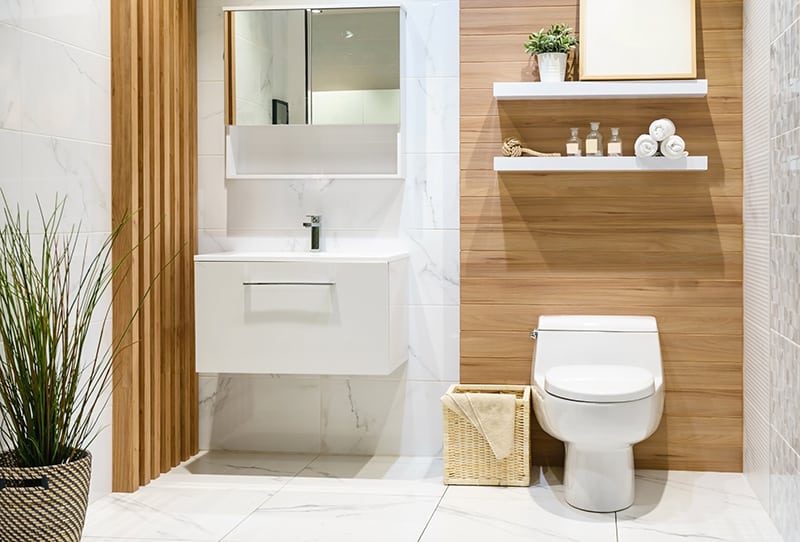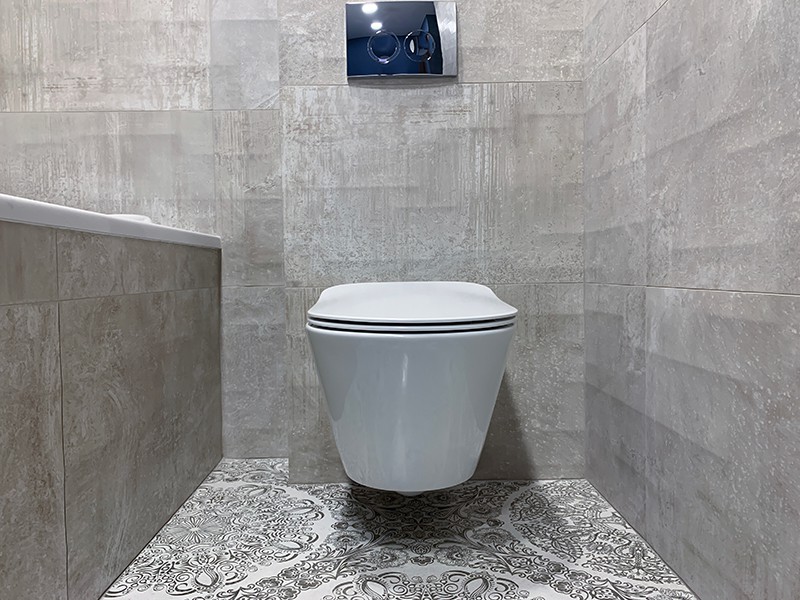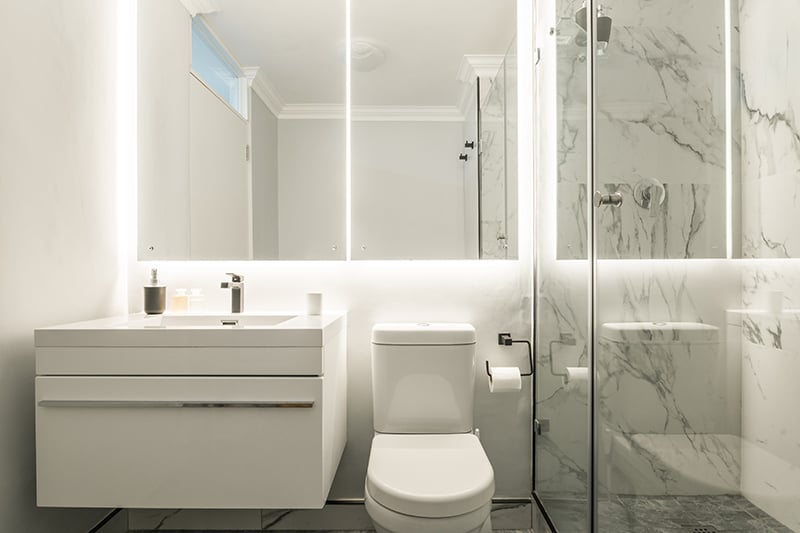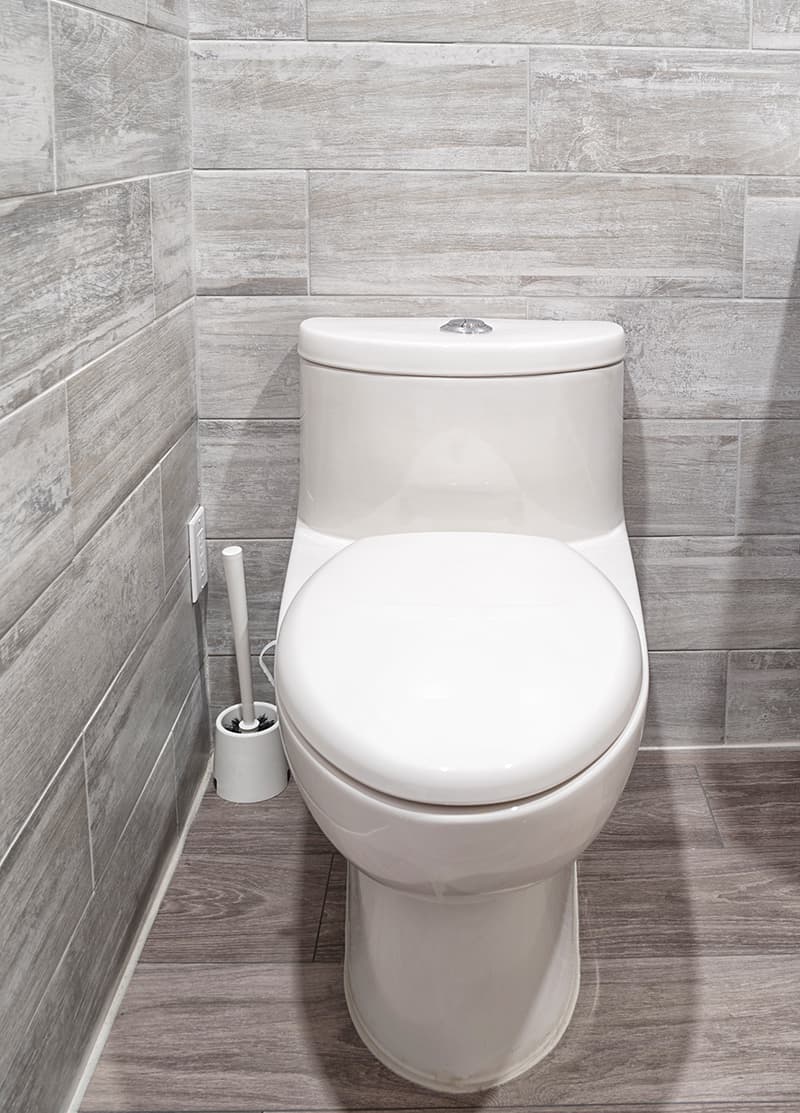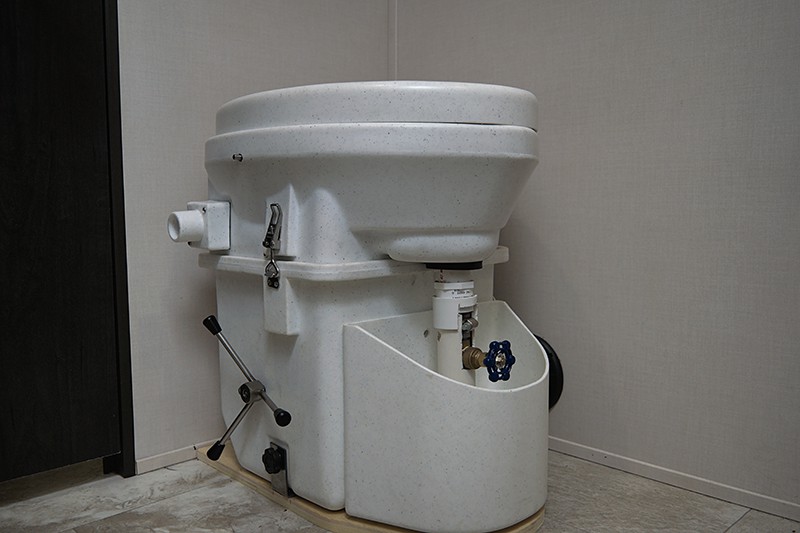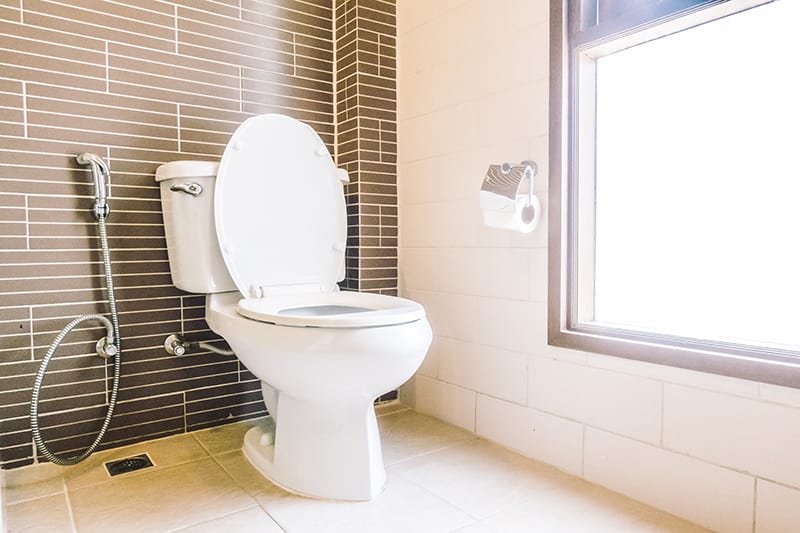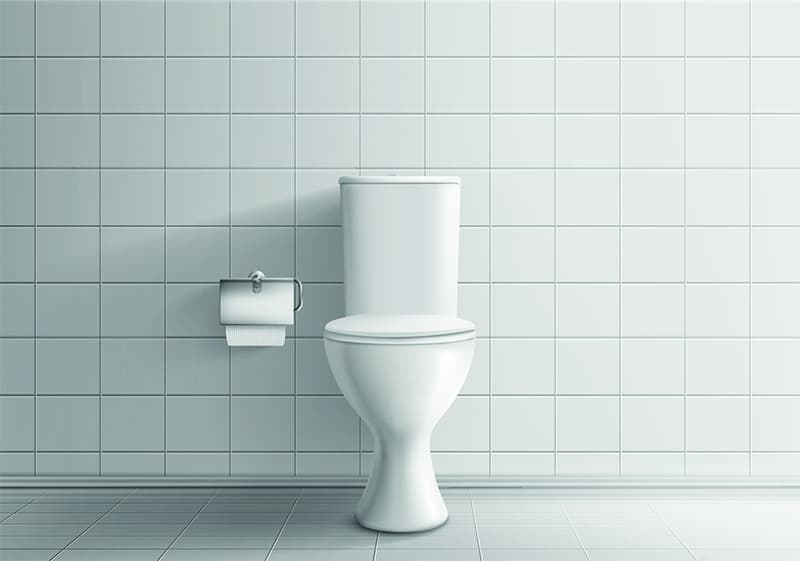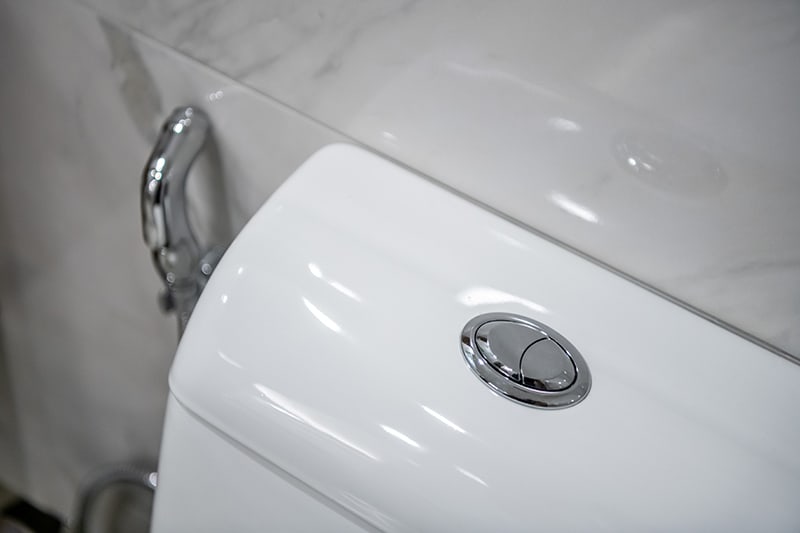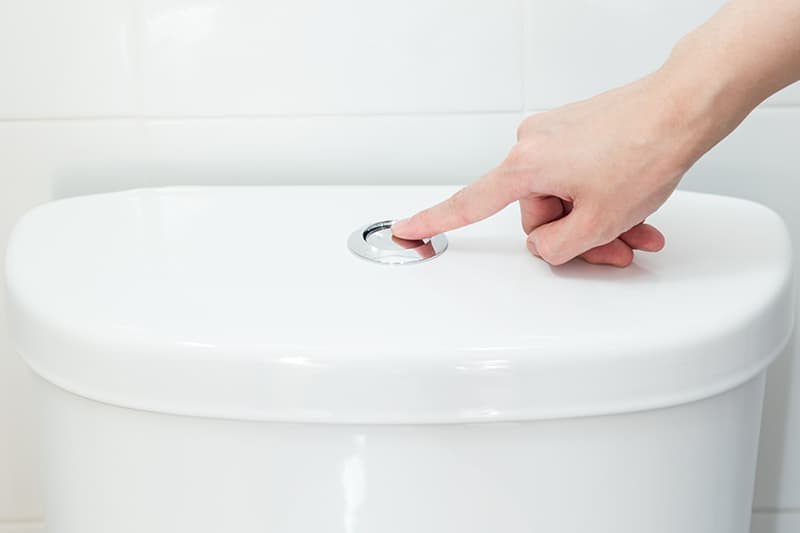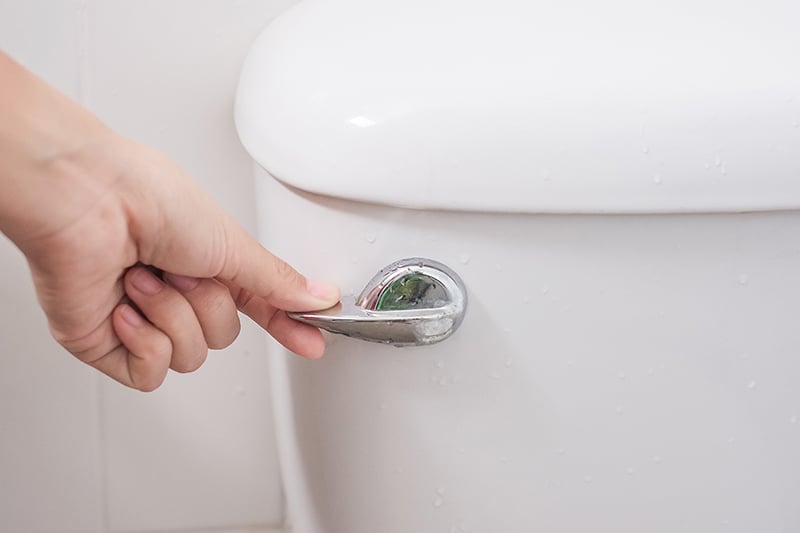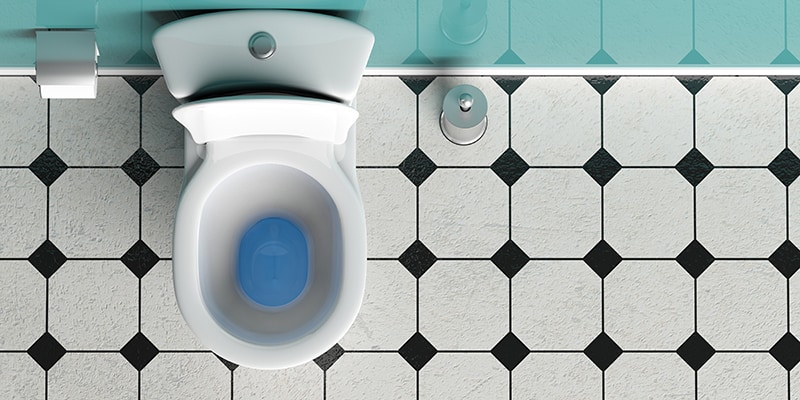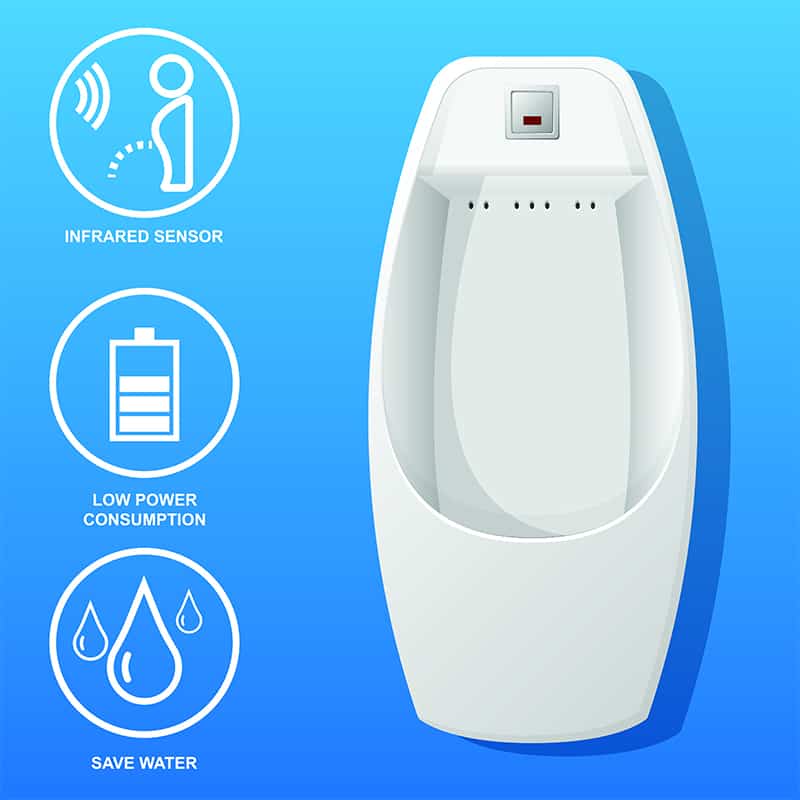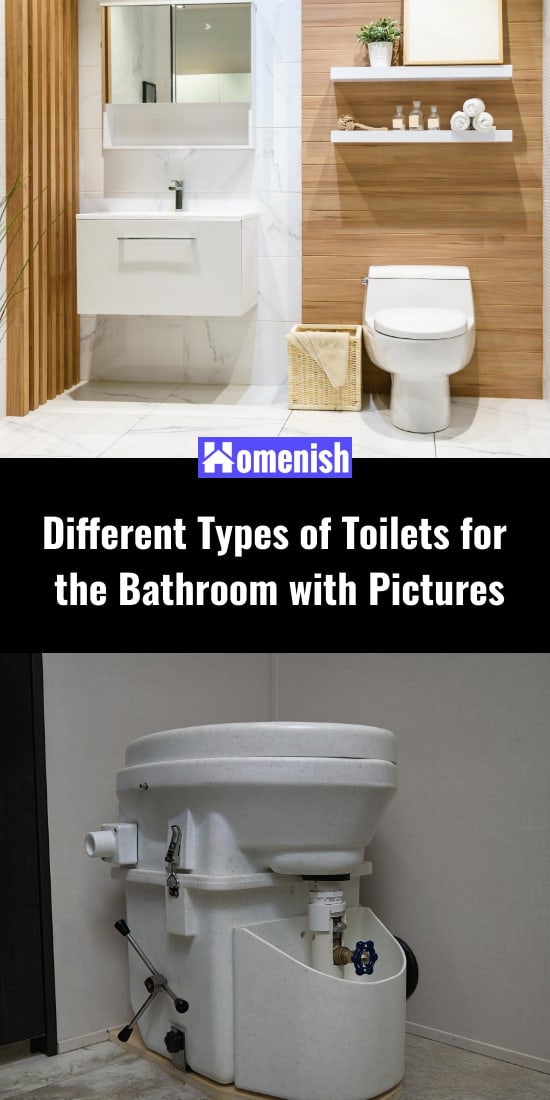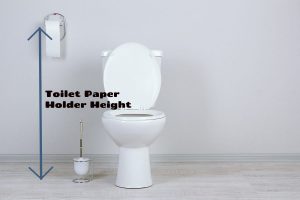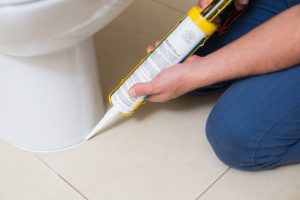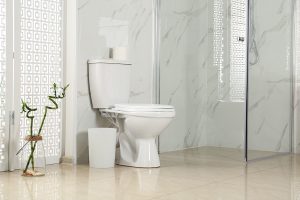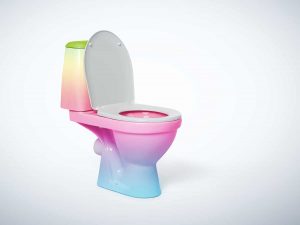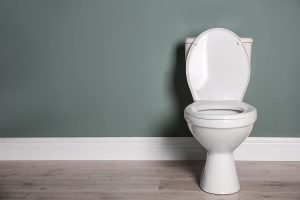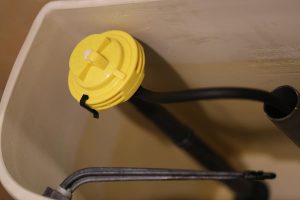If you’re renovating your bathroom or need to replace an outdated or broken toilet, you’ll be interested to know that there are a wide variety of options available. Whether your focus is on functionality, design, or efficiency, there are many types of toilets on the market that could suit your needs.
To learn about the different types of toilets available, as well as how they flush and what other features you might want to consider, browse this informative guide.
Toilet Styles
Wall Hung
Wall-hung toilets are exactly what you would expect from the name; they are attached to the wall instead of being positioned on the floor. These types of toilets work well if you want the toilet to sit at a specific height, for example, to make using the toilet easier if you are disabled or if you are very short or tall.
This is because you can hang the toilet at any height you like, unlike a standard floor toilet that will be a set height. In doing this, you can completely customize the height of your toilet.
Wall-hung toilets are also very popular in ultra-modern and contemporary bathrooms, as they have few visible pieces and have a more minimalist look to them. These toilets look as though they are almost floating in mid-air, which adds a fun design feature to a bathroom. An added benefit is that you can easily clean underneath the toilet in one quick swoop, rather than having to clean around it at the base.
As you might expect, wall-hung toilets are a little more complex to install than traditional floor-based toilets. They require a wall mounting kit to ensure that the toilet is securely fixed to your wall, and depending on your home, the wall you want the toilet to hang from may need to be reinforced to ensure it is capable of holding the weight.
You may also have noticed that the part of the toilet that contains the cistern is no longer visible in a wall-hung toilet, but you will still need a cistern for the toilet to operate.
This means that you will have to buy a concealed cistern and have this installed. Wall-hung toilets are not especially expensive, though you can expect to pay a higher fee to your contractor to fit a wall-hung toilet as they require more work and expertise.
Back to Wall
These toilets have the cistern concealed by a partition wall or a piece of furniture, such as a tall cupboard. This gives the look of a smaller and more minimalist toilet, with only the front half of a typical toilet being visible.
These toilets work exactly the same as conventional toilets; it is simply that half of the toilet is hidden by being surrounded by furniture or drywall. A back-to-wall toilet is a good option if you want a modern look, but you don’t want to go all the way to a wall-hung toilet.
This type of toilet can be considered as a compromise between a wall-hung toilet and a standard two-piece toilet. These toilets are also great as a space-saving solution, for example, in a small bathroom or an ensuite. When buying a back-to-wall toilet, you need to ensure that you buy a kit that also includes the hidden cistern or purchase a hidden cistern separately.
You can also buy kits that include compatible pieces of furniture to conceal the cistern, rather than having to create a wall or custom boarding around the cistern. This will make the installation process much easier and smoother.
The furniture surround for the concealed cistern might simply take the shape of a wooden rectangular box, or it may have shelving or cupboards above it for added storage. You will be able to find this furniture in a range of styles and designs to match your interior, for example, in different types of wood veneer or painted wood in black or white.
One Piece
A one-piece toilet, as you would expect from the name, is a single unit made entirely from one piece of material. These toilets are molded as a whole piece, as opposed to two-piece toilets, in that the cistern can be separated from the bowl.
There are several advantages to a one-piece toilet. Many people find they are more visually appealing, as they have a seamless look. They are easier to install as they are already assembled and can therefore be fixed into place more quickly, but for most people, the biggest advantage of these toilets is that they are so much easier to clean.
As there are no seams between the various parts of the toilet, there are no small gaps for dirt or grime to get into that are then difficult to access to remove. A one-piece toilet can simply be wiped down without having to worry about any hidden crevices that might be accumulating germs.
The disadvantage of a one-piece toilet is that if any part of the toilet gets damaged or becomes defective, you will need to replace the entire thing, rather than just replacing a part of it. One-piece toilets also tend to be less efficient when compared with two-piece toilets, and they aren’t expected to last as long.
Two-Piece
A two-piece toilet is made from two pieces that are assembled together in the bathroom. These two separate pieces are the toilet bowl and the toilet tank. Generally, when buying a two-piece toilet, you would buy the entire toilet as a set, with a matching bowl and matching tank, though it is possible to mix and match the two pieces if you ensure they are the same size.
Sometimes, these types of toilets are referred to as ‘close coupled toilets,’ and this name refers to the way that that two pieces are fixed close together, rather than being kept separate as many old-fashioned toilets were, with the cistern being fixed high up on the wall with a long chain to access the flush.
Two-piece toilets are the most common type of toilets, and this popularity is owed to their low cost, long life span, and the fact that they are available in a huge variety of styles, designs, and sizes.
When you are looking to buy a toilet, you are likely to see the most amount of options in a two-piece type of toilet, as these are now considered the standard for toilets.
Some people find two-piece toilets difficult to keep clean because there are a few nooks and crannies for dirt to get stuck in, but if this is a concern you have, you can opt for a fully shrouded two-piece toilet that eliminates this problem.
Two-piece toilets can work in modern and contemporary bathrooms if you choose the right style, but they can also work well with traditional design too.
Toilet Types
Waterless Toilet
Waterless toilets are reserved for areas that do not have access to plumbing, such as work sites or festivals. These are self-contained units whereby waste does not get flushed away but instead is collected in a tank beneath the toilet seat.
Another innovative solution in areas without access to plumbing or for eco-friendly options is the use of an incinerating toilet, which burns waste into a small amount of ash without the need for water. This technology provides an alternative for handling waste where traditional plumbing is impractical or unavailable, further expanding the versatility of toilet options for different settings.
Pressure Assisted Toilet
Pressure assisted toilets utilized forced air, which pushes water through the system at a much greater velocity than the more common gravity-feed toilets. One of the key benefits of a pressure-assisted toilet is that it is far more efficient. Waste is flushed away much faster and using less water, making it more economical.
These types of toilets are also much less susceptible to blockages than gravity-feed toilets, so if this is a problem your current toilet regularly suffers from, you might want to look into upgrading to a pressure-assisted toilet. The main disadvantage with these types of toilets is that the flush is quite loud. This might be a problem if you have light sleepers in your family who may get disturbed by others using the toilet during the night.
Gravity Feed Toilet
This is the most common type of operation you will see on a toilet, and as the name suggests, it simply uses gravity to allow water to flush out waste.
This works with either a button or a lever, which, when triggered, will release water that has been stored in the toilet tank. When the flush is operated, water will flow through the bowl using gravity as a force to carry any waste away through the trapway.
When looking for a toilet to purchase for your bathroom, the vast majority of them will have a gravity feed. These types of toilets are popular because they are very quiet to flush and have very few moving parts, which means maintenance is minimal and any repairs are low cost.
Dual Flush Toilet
This type of toilet is relatively new to the market but has been gaining popularity rapidly in recent years. A dual flush toilet features buttons for both a gravity feed flush and a pressure-assisted flush, so you can choose that option you use. There are several benefits to this, which include reducing water usage and also the option of using the quieter flush during the night to prevent disturbances.
A dual flush system will have one button that indicates that it is for a full flush; generally, this is the larger button. This type of flush uses the pressure-assisted flush and is intended for solid waste.
The smaller button represents the half flush, which uses a gravity feed flush, and this is intended for liquid waste. These types of toilets are rapidly catching up with gravity feed toilets in terms of popularity, and it’s likely in the near future that they will take over.
Double Cyclone Toilet
A double cyclone toilet is capable of producing a more powerful flush than its competitors while also using less water. This technology is fairly new and is not yet widespread in homes, but it has the potential to revolutionize the toilet market. All other types of toilets flush water into the bowl through small holes in the rim of the toilet, from which the water flows.
Double cyclone toilets are different because instead of holes, they have two nozzles in the toilet rim, which are able to exert more power while using slightly less water. The name ‘double cyclone’ is easy to understand once you have witnessed the flush, as the swirling water looks like two cyclones wrapped up together.
Toilet Flush Options
Push Button Flush
This flush option is self-explanatory; it is simply a button that you push to operate the flushing action. You can find these in both single flush or dual flush options. These are becoming increasingly more popular over handle flush toilets, especially in modern bathrooms.
Handle Flush
This is a more traditional flushing option, which is still widespread. To operate, you simply push down on the handle. Whether you choose a push button or a handle flush is really down to preference and will make no noticeable difference in the way your toilet works.
You may choose to make a decision based on aesthetics or how you manually prefer to handle the flushing of the toilet. If you have arthritis or any joint problems, you may find one option works better than the other for you.
Single Flush
A single flush toilet is exactly that; you will press the button or push the lever handle to operate the flush, and this will result in a consistent flush that is the same amount of water and pressure each time. These types of toilets are currently the most commonly available, but they are followed closely by double-flush toilets.
Double Flush
Double flush toilets offer two types of flushes: a half flush and a whole flush. These can be operated by handles or buttons. When using a handle on a double-flush toilet, you would typically push it down halfway for a single flush or all the way down for a full flush.
If your double flush toilet has push buttons, you might have two different-sized buttons to indicate a half or full flush, or there may be a single button; in that case, a light press would be for a half flush and a firm, the longer press would release a full flush.
Touch-Free Flush
These types of toilets are not commonly used in homes but instead are popular in public restrooms. They use a sensor that is usually battery-operated, and it detects with a wave of the hand that you want to flush the toilet. The main benefit of these types of toilets is the prevention of spreading germs.
By limiting the amount of equipment a person needs to touch to use a toilet, these toilets offer ultimate cleanliness. It is possible to buy touch-free flushing toilets for installation in the home, or you can even convert your current single-flush or double-flush toilet to operate via a sensor.
Toilet Design Options
Bowl Shape
When choosing your toilet, you will usually face the option of three main bowl shapes. These are elongated, round front, and compact elongated. The most common type of bowl is elongated, and these are popular because they offer the most comfort.
They are oval-shaped and have a standard size of 18 inches from front to back. However, they also take up the most space in a bathroom, so if you are trying to keep things compact, then an elongated bowl might be too large for you.
Round front bowls have a round shape and a smaller footprint than elongated bowls. They will save you about two inches of space, which could be vital in a small bathroom. However, they are not considered to be as comfortable to use as an elongated bowl.
Compact elongated bowls are a good compromise between the elongated bowl and round front bowl if you want to save space but also maintain an element of comfort. They take up around the same amount of space as a round, front bowl, but their slightly oval shape makes them less awkward to sit on.
Color
Most modern toilets are found in white or ivory, though if you want a specific color of toilet to add some character to your bathroom, then you should be able to find almost any color you want online. When it comes to colored toilets, the most common options are in pastel shades, such as baby blue, baby pink, and pale mint green.
You can match a colored toilet to a matching sink and bath for a highly stylized look. Be sure to choose a color that won’t go out of fashion too quickly. The benefit of white toilets is that they look clean and fresh, and they are also a neutral color that will always fit in with whatever color scheme you decide to use in your bathroom. A white toilet will see you through many years, and you can change up the look of the room easily with accessories like towels and candles.
Size
When it comes to the width and length of the toilet, you may find several options that you can choose to fit the size and shape of your bathroom. When it comes to height, there are much fewer options. The standard size for a toilet is between 15 and 17 inches from floor to seat, depending on the toilet seat used.
The other option is chair height toilets that put the height of the seat at 19 inches, the standard chair height. The height of a toilet seat will affect comfort and functionality, as well as the look of the room. If you have mobility issues, you might want a taller toilet seat that requires less bending, and if this is the case, it might be best to choose a wall hung toilet where you can completely customize the height of the toilet.
Style
Although the functionality of your toilet is probably the most important consideration, you’ll likely also want to investigate the different styles of toilets you can get, as this will affect the overall look and feel of your bathroom. For a more modern style, choose a simple-looking toilet without much fuss or decoration. More traditional style toilets can have a stately or ornate look, and these work well if you are going for a classic style.
Toilet Seat
Most toilets, especially two-piece toilets, do not come with a toilet seat. This means you will need to buy one separately. Even one-piece toilets may not include a toilet seat, so you’ll need to check to ensure your toilet is fully usable as soon as it’s installed. When it comes to choosing a toilet seat, you’ll first want to ensure you select one that is the same size and color as the toilet, or if you’re looking to add a quirky touch to your bathroom, you can find toilet seats in various themes.
In terms of types of toilet seats, you have two main options: standard toilet seats that have a hard close and soft close toilet seats. The difference between these two types is the way they close. Standard toilet seat lids need to be handled gently because if you drop them, they will slam down onto the toilet seat, making an audible noise.
Soft-close toilet seats, by comparison, have a special mechanism on the hinge that means even if you tried to slam the toilet lid, it wouldn’t work and instead would bring itself to a slow-motion close.
These soft-close toilet seats are great for anyone with children who forget to close the lid gently, and they offer a more upmarket feel to a toilet. Soft-close toilet seats are more expensive to buy than standard toilet seats, but they are a simple way to upgrade a toilet to make it seem higher-end.
